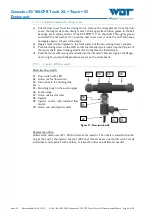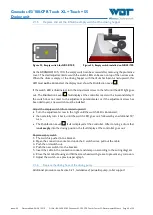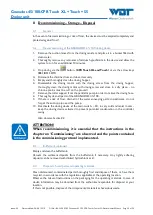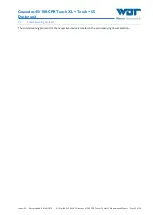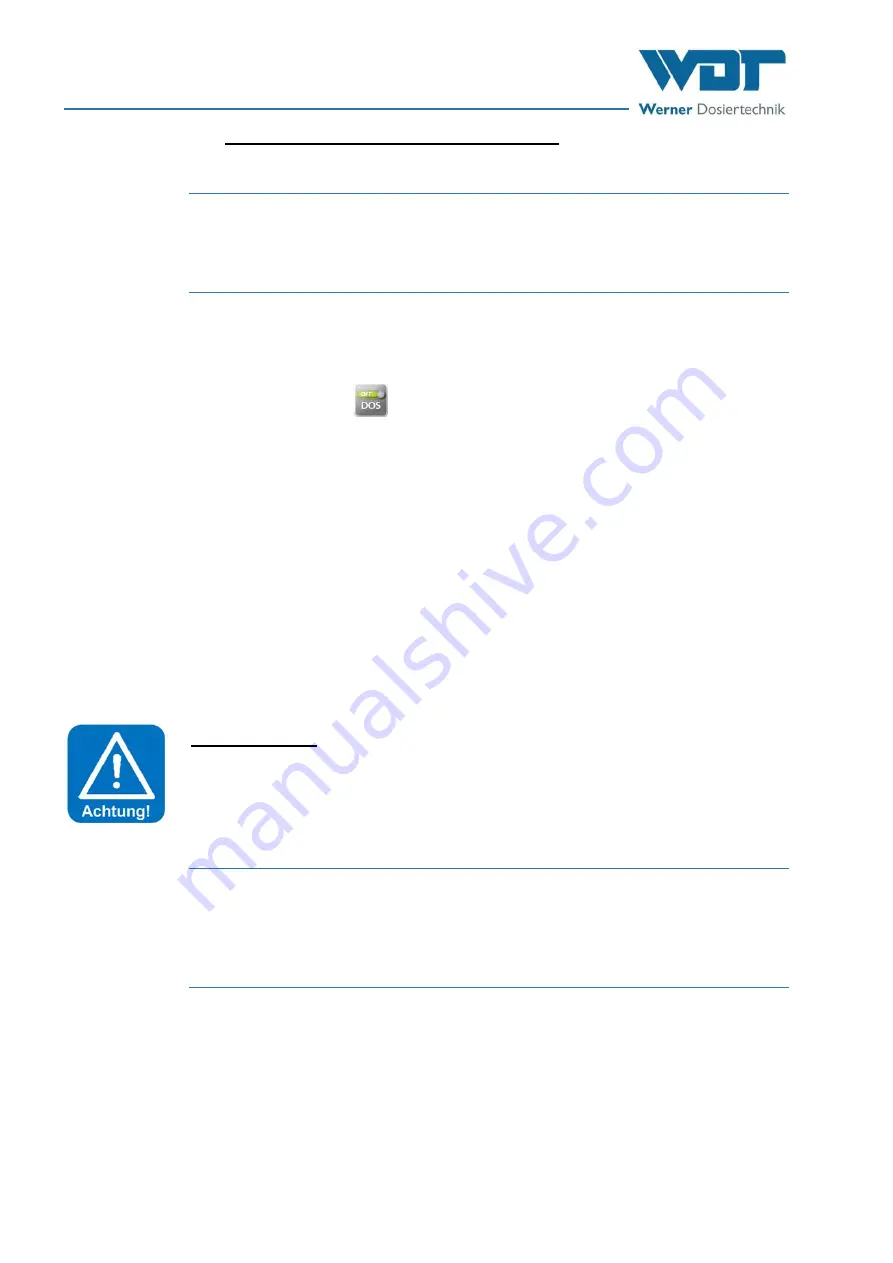
Granudos 45/100-CPR Touch XL + Touch + S5
Dosing unit
Index: 02
Date modified: 06/06/2019
OI No.: BA SW 003-02 Granudos 45-100 CPR Touch+Touch+S5-Dosiereinheit EN.docx Page 50 of 58
8
Decommissioning – Storage – Disposal
8.1
General
In the event of decommissioning or risk of frost, the devices must be emptied completely and
protected against frost!
8.2
Decommissioning of the GRANUDOS 45/100 dosing device
1.
Remove the suction lances from the dosing canister and place it in a bucket filled with
clean water.
2.
Thoroughly remove any remnants of calcium hypochlorite in the device and allow the
system to run for an additional 10 minutes.
3.
Stop dosing via the
button.
(CPR Touch XL and Touch)
or via the arrow keys
(S5)
(DOS OFF)
4.
Dismount the chlorine drum and close it securely.
5.
Empty and thoroughly clean the dosing hopper.
6.
Disassemble the dosing motor with the dosing screw from the dosing hopper,
thoroughly clean the dosing motor with dosing screw and store in a dry place.
- no
chlorine grains must be left on the ground!
7.
Remove the roller support from the peristaltic pump in order to relieve the dosing hose.
8.
Thoroughly clean all parts of the GRANUDOS 45/100.
9.
If there is a risk of frost, drain all of the water-conveying parts;
in particular, do not
forget the suction pipe and the pump.
10.
Deactivate the dosing device at the main switch. – Or, in very cold and moist rooms -
keep the dosing device activated to prevent potential condensation in the controller
casing.
Also observe
Section 8.3
ATTENTION!
When recommissioning, it is essential that the instructions in the
chapter on "Commissioning" are observed and the points contained
in the commissioning protocol implemented.
8.3
Buffertank (optional)
Empty and clean the buffertank.
Vacuum the sediment deposits from the buffertank, if necessary. Any tightly adhering
deposits can be removed with diluted hydrochloric acid.
8.4
Disposal of used parts and operating materials
Clean dismounted, contaminated parts thoroughly first and dispose of them, or have them
recycled, in accordance with the regulations applicable at the operating location.
Observe the relevant instructions on the packaging for the operating materials. In case of
doubt, information may be obtained from the authorities responsible for disposal at your
location.
If this is not possible, dispose of the components/materials as hazardous waste.











